Training a beagle requires understanding their energetic temperament and independent nature. Beagles are highly energetic and independent dogs, known for their spirited personalities and strong hunting instincts. To effectively train a beagle, it’s important to establish yourself as the leader and use positive reinforcement techniques that motivate and engage them.
Key Takeaways:
- Beagles have an energetic and independent nature, requiring firm leadership and consistent training.
- Positive reinforcement methods, such as food rewards, are effective in beagle training.
- Regular exercise is crucial for beagles to burn off their energy and enhance their receptiveness to training.
- Important commands to teach include sit, stay, come, and discouraging jumping or biting behaviors.
- Consistency and patience are key to successfully housebreaking a beagle.
Mastering the art of beagle training is a rewarding journey that requires commitment, consistency, and a deep understanding of their nature. With our comprehensive guide, you will gain the knowledge and tools to train your beagle effectively and build a strong bond based on trust and respect.
Beagle Training Tips for Success
Here are some essential tips and techniques to ensure successful beagle training. Beagles are well-known for their energetic nature and independent streaks, which can sometimes make training a challenge. However, with the right approach and consistent effort, you can master the art of training these lovable dogs.
First and foremost, it’s crucial to establish yourself as the leader. Beagles respond best to firm and confident leadership. Use positive reinforcement methods such as treats, praise, and affection to reward good behavior and reinforce desired commands. This will help build a strong bond between you and your beagle while making the training process more enjoyable for both of you.
Consistency is key when it comes to beagle training. Set aside regular training sessions throughout the day, keeping them short and engaging. Beagles have short attention spans, so it’s important to keep the sessions fun and varied. Use a mix of verbal cues, hand signals, and treats to reinforce commands like sit, stay, come, and more.
Exercise plays a crucial role in beagle training. These active dogs have a lot of energy to burn, so regular physical activity is essential. Take your beagle for daily walks, engage in playtime, and provide mental stimulation through puzzle toys and interactive games. A tired beagle is more likely to be receptive to training and less prone to behavioral issues.
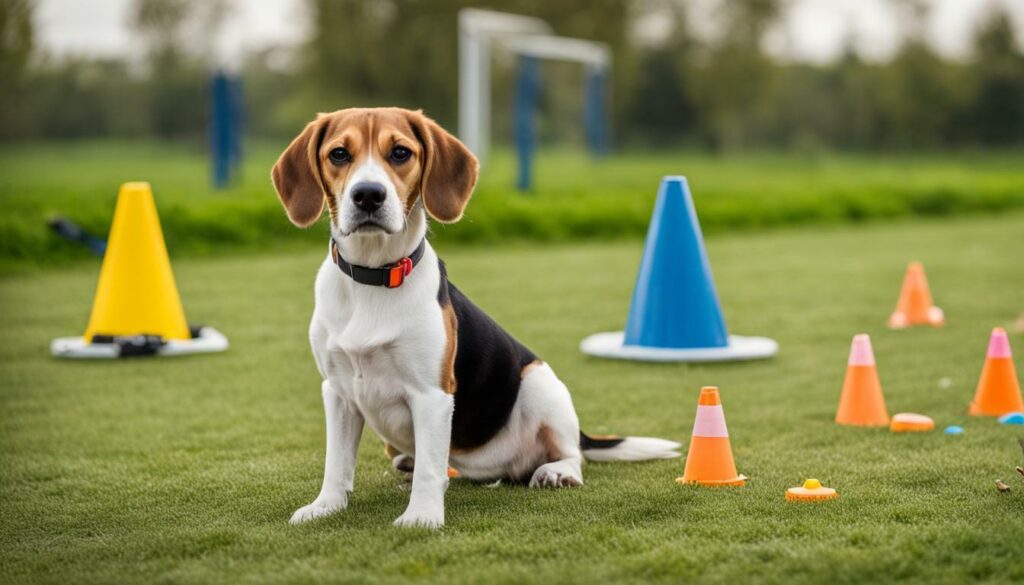
| Training Tips | Techniques |
|---|---|
| 1. Be Patient | Training takes time, so be patient and consistent with your beagle. |
| 2. Use Positive Reinforcement | Rewards and praise will motivate your beagle and reinforce desired behaviors. |
| 3. Establish Yourself as the Leader | Be firm and confident in your training approach to gain your beagle’s respect. |
| 4. Keep Training Sessions Short and Engaging | Beagles have short attention spans, so keep training sessions fun and varied. |
| 5. Incorporate Mental Stimulation | Use puzzle toys and interactive games to keep your beagle’s mind sharp and focused. |
Summary:
Mastering the art of beagle training requires understanding their energetic temperament, taking a firm lead, and being patient. Beagles are highly energetic and independent dogs, so it’s important to establish yourself as the leader and use positive reinforcement methods. Regular training sessions throughout the day are recommended, and beagles respond well to food rewards. Exercise is crucial for beagles, as it helps burn off their energy and makes them more receptive to training. Important commands to teach include sit, stay, come, and not jumping or biting. Beagles are prone to barking, so it’s important to anticipate their barking and redirect their attention. Good housetraining routines and consistency are key to successfully housebreaking a beagle. Overall, mastering beagle training requires commitment, consistency, and positive reinforcement techniques.
Understanding Beagle Behavior and Temperament
To effectively train a beagle, it is important to understand their behavior and energetic temperament. Beagles are known for their high energy levels and independent nature. They have a strong sense of smell and an innate curiosity that drives them to explore their surroundings. This can sometimes lead to distractions during training sessions, so it’s crucial to create a focused and stimulating environment to keep them engaged.
Beagles thrive on positive reinforcement methods. They respond well to rewards, such as treats or praise, when they exhibit desired behaviors. It’s essential to establish yourself as the leader through consistent training and assertiveness. Being patient with your beagle is key, as their independent nature may require more time to grasp commands and concepts.
Regular training sessions throughout the day are recommended to maximize their learning potential. Short, focused sessions are more effective than long, tedious ones. Incorporating exercise into their daily routine is crucial as it helps burn off their excess energy and makes them more receptive to training. A tired beagle is more likely to pay attention and follow instructions.
Beagle Behavior and Training Tips:
- Establish yourself as the leader through assertiveness and consistency.
- Use positive reinforcement methods, such as treats and praise.
- Keep training sessions short, focused, and frequent.
- Incorporate regular exercise to burn off excess energy.
By understanding the behavior and temperament of beagles, you can tailor your training approach to suit their needs. Consistency, patience, and positive reinforcement are the keys to mastering the art of beagle training. With the right techniques and a deep understanding of their energetic nature, you can build a strong bond with your beagle and achieve successful training results.
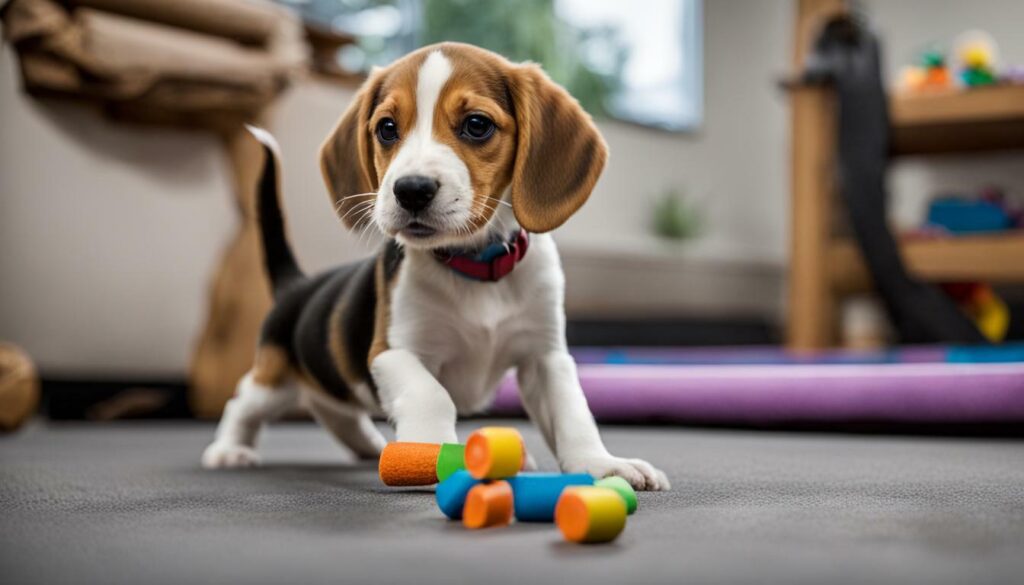
| Training Tips | Key Takeaways |
|---|---|
| Establish yourself as the leader | Beagles respond well to assertiveness and consistency. |
| Use positive reinforcement | Rewards like treats and praise motivate beagles to exhibit desired behaviors. |
| Short, frequent training sessions | Regular, focused training is more effective than long, tedious sessions. |
| Incorporate exercise | Burning off excess energy through exercise makes beagles more receptive to training. |
Beagle Obedience Training
Obedience training is essential for teaching your beagle important commands and ensuring their overall obedience. Beagles are highly energetic and independent dogs, which can make training a bit challenging. However, with the right techniques and consistency, you can master the art of beagle obedience training.
Regular training sessions throughout the day are recommended to keep your beagle engaged and focused. Beagles respond well to positive reinforcement methods, so using food rewards and praise can be highly effective. It’s important to establish yourself as the leader and maintain a firm but gentle approach during training.
Exercise plays a crucial role in beagle training. These dogs have a lot of energy to burn, so providing them with regular physical activity will help them stay calm and attentive during training sessions. A tired beagle is more receptive to learning and less likely to get distracted.
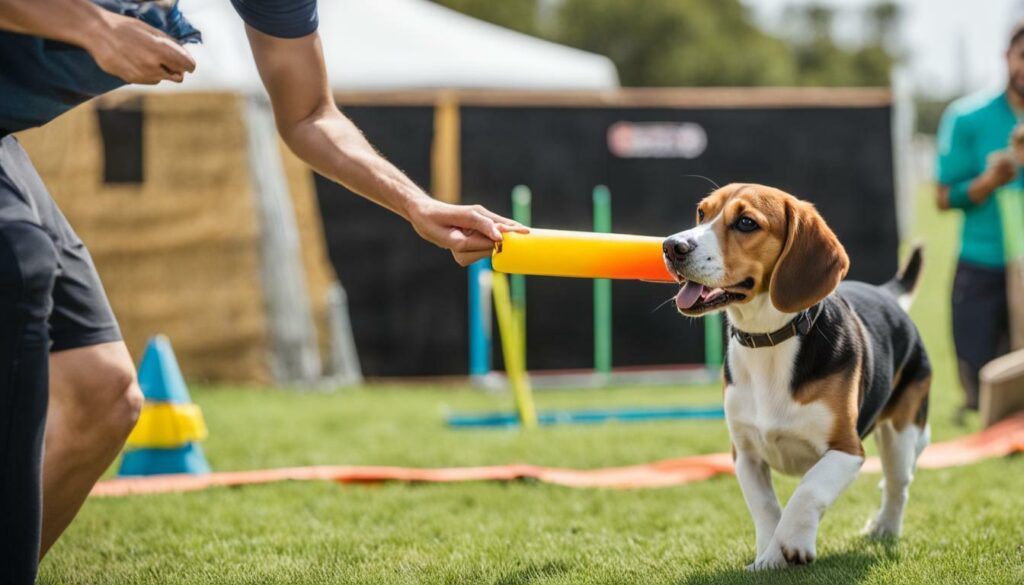
Some important commands to teach your beagle include sit, stay, come, and not jumping or biting. Use consistent verbal cues and hand signals to reinforce these commands. Beagles are prone to barking, so it’s important to anticipate their barking triggers and redirect their attention to reduce excessive noise.
Consistency and patience are key when housebreaking a beagle. Establish a housetraining routine and take your beagle outside regularly, immediately after meals and naps. Use positive reinforcement and reward your beagle for eliminating in the appropriate spot. With time and consistency, your beagle will learn to associate the designated area with bathroom breaks.
Remember, mastering beagle obedience training requires commitment, consistency, and positive reinforcement techniques. With the proper guidance and a firm yet gentle approach, you can train your beagle to be a well-behaved and obedient companion.
Training Beagle Puppies
Training beagle puppies requires patience, consistency, and the use of positive reinforcement methods. Beagles are known for their energetic nature and independent streak, so it’s important to establish yourself as the leader and create a structured training routine. Regular training sessions throughout the day, rather than long, intensive sessions, are recommended to keep their attention and prevent boredom.
When it comes to using positive reinforcement, beagles respond well to food rewards. Treats that are small, moist, and tasty are ideal for training purposes. Rewarding good behavior with a treat and verbal praise helps motivate them and reinforces the desired actions. It’s important to be consistent and provide rewards immediately after the desired behavior occurs to reinforce the connection.
Exercise is crucial for beagles, not only for their overall health but also for their training. These active dogs require daily physical activity to burn off their excess energy and stay focused during training sessions. Incorporate regular walks, playtime, and interactive toys to keep them mentally and physically stimulated. A tired beagle is more likely to be receptive to training and less prone to distractions.
Important commands to teach your beagle puppy include sit, stay, come, and not jumping or biting. Start with basic obedience training and gradually introduce more complex commands as they progress. Be consistent with your commands and use clear, positive language. In addition to verbal cues, hand signals can also be effective in reinforcing commands. The key is to be patient and understanding that each puppy learns at their own pace.

| Training Tips for Beagle Puppies: |
|---|
| 1. Keep training sessions short and frequent to maintain their attention span. |
| 2. Use positive reinforcement techniques, such as treats and praise, to reward good behavior. |
| 3. Establish a consistent routine and set clear boundaries to create a structured environment for your puppy. |
| 4. Socialize your beagle puppy from an early age to expose them to different people, animals, and environments. |
| 5. Seek professional assistance if you encounter any challenges or difficulties during the training process. |
Training beagle puppies can be a rewarding experience when approached with patience and positive reinforcement. By establishing yourself as the leader and providing consistent training, exercise, and rewards, you can help your beagle puppy develop into a well-behaved and obedient companion.
Dealing with Beagle Barking
Beagles are prone to barking, but there are effective techniques to manage and redirect their barking behavior. Understanding the underlying reasons behind their barking can help address the issue more effectively. Beagles may bark to communicate, seek attention, express boredom, or respond to external stimuli. By identifying the triggers and using positive reinforcement methods, you can train your beagle to control their barking.
Redirecting your beagle’s attention is a key strategy in managing their barking. Distract them with toys, puzzles, or puzzles that engage their mental and physical abilities. Providing them with plenty of exercise and mental stimulation can also help reduce excessive barking. Beagles thrive on activity, so regular walks, playtime, and interactive games are essential to keep them content and tired.
Consistency and patience are crucial when training a beagle to reduce barking. Use positive reinforcement techniques such as rewards and praise for quiet behavior. Avoid punishment or yelling, as it may escalate their barking or create anxiety. Beagles respond well to gentle guidance and positive reinforcement. With time and consistency, you can teach your beagle to control their barking and become a well-behaved member of your household.
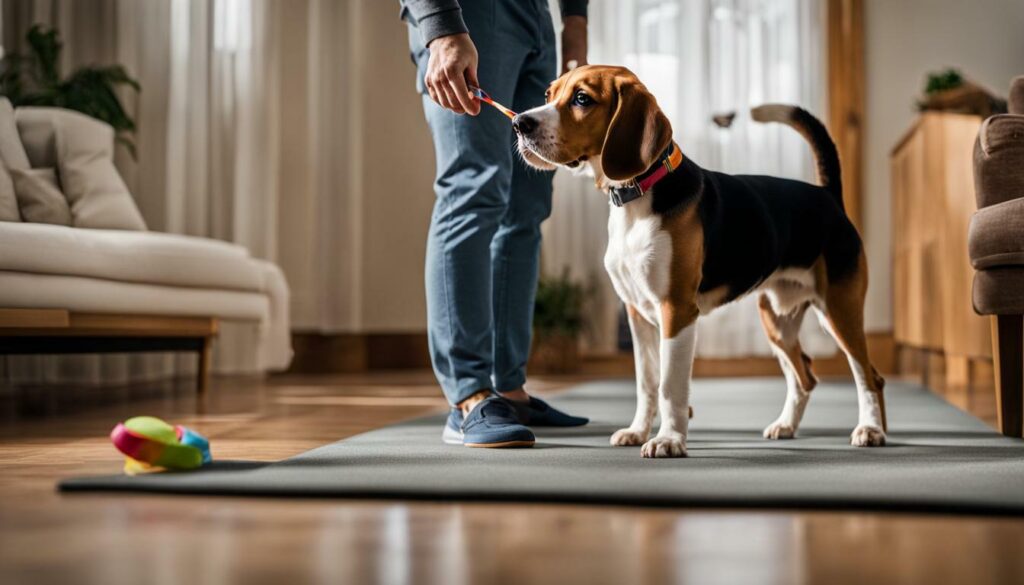
| Effective Techniques for Managing Beagle Barking |
|---|
| 1. Identify triggers: Determine what causes your beagle to bark and address those triggers. |
| 2. Distraction: Redirect their attention with toys or engaging activities to divert their focus from barking. |
| 3. Exercise and mental stimulation: Ensure your beagle receives enough physical exercise and mental stimulation to prevent boredom barking. |
| 4. Positive reinforcement: Reward quiet behavior with treats and praise to encourage your beagle to remain calm. |
| 5. Consistency and patience: Train your beagle consistently and be patient as it takes time for them to understand and respond. |
Housebreaking Your Beagle
Successfully housebreaking your beagle requires consistency, patience, and the establishment of a good routine. Beagles are intelligent dogs, but they can be stubborn, so it’s important to set clear expectations from the start. Here are some tips to help you navigate the housebreaking process with your beagle.
- Establish a designated potty area: Choose a specific spot in your yard where you want your beagle to relieve themselves. Take them to this area consistently, especially after meals, naps, and playtime. Waiting patiently until they do their business will reinforce the idea that this is the appropriate location.
- Set a schedule: Structure and routine are essential for successful housebreaking. Take your beagle outside at regular intervals throughout the day, and be consistent with feeding times. This will help them develop a predictable bathroom routine.
- Use positive reinforcement: When your beagle eliminates in the designated potty area, praise them lavishly and offer a treat as a reward. Positive reinforcement will reinforce the desired behavior and motivate them to continue using the designated spot.
- Take note of cues and patterns: Beagles often exhibit specific behaviors or signs when they need to go potty, such as sniffing, circling, or whining. Pay attention to these cues and take them outside immediately to avoid accidents indoors.
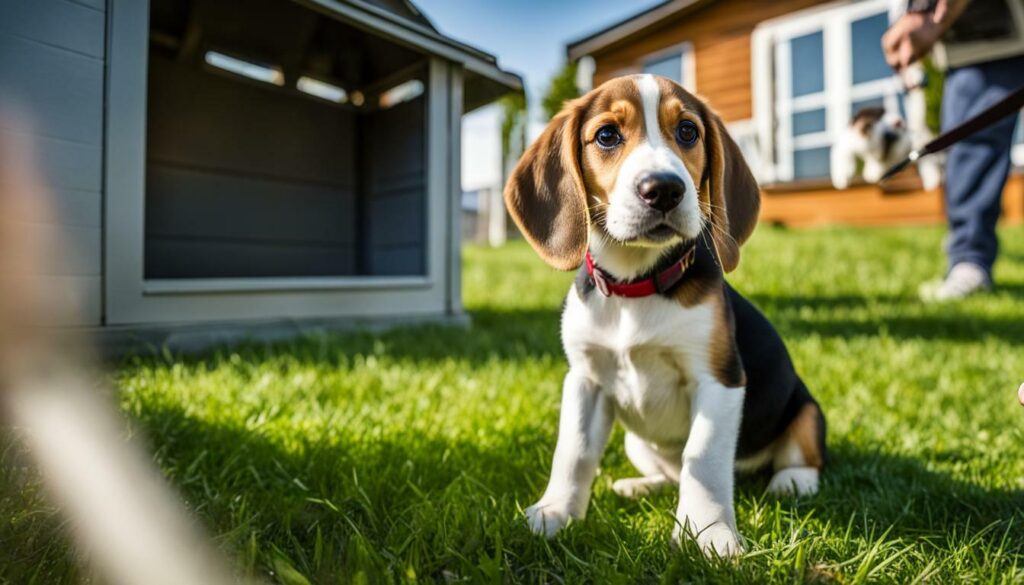
Remember, accidents may happen during the housebreaking process, but it’s important to remain patient and avoid punishment. Punishment can create fear and anxiety, hindering the training process. Instead, focus on positive reinforcement, consistency, and establishing a routine that works for both you and your beagle. With time and dedication, your beagle will learn to be a well-trained and housebroken companion.
| Benefits of Consistent Housebreaking | Tips for Success |
|---|---|
| 1. Avoiding indoor accidents | 1. Establish a regular feeding schedule |
| 2. Establishing a clear routine | 2. Be patient and consistent |
| 3. Strengthening the bond between you and your beagle | 3. Use positive reinforcement techniques |
| 4. Creating a stress-free home environment | 4. Take note of your beagle’s cues |
The Role of Exercise in Beagle Training
Regular exercise plays a vital role in beagle training, as it helps burn off their energy and increases their focus during training sessions. Beagles are highly energetic dogs that require physical activity to keep them engaged and prevent destructive behaviors. Incorporating daily exercise into their routine not only helps them release pent-up energy but also keeps them mentally stimulated.
When it comes to exercising your beagle, it’s important to choose activities that align with their natural instincts. Beagles have a keen sense of smell and love exploring their surroundings. Taking them for long walks or hikes allows them to satisfy their need for sniffing and investigating their environment. Additionally, providing them with puzzle toys or engaging in interactive games like hide-and-seek can challenge their minds and prevent boredom.
Another effective exercise technique for beagles is participating in agility training. This not only provides physical exercise but also helps improve their coordination and focus. Agility courses often involve obstacles such as jumps, tunnels, and weave poles, which require the beagle to follow commands and navigate through various challenges.
Remember, consistency is key when it comes to exercise. Aim for at least 30 minutes to an hour of physical activity each day, but be mindful of your beagle’s age and health condition. Always consult with your veterinarian before starting any new exercise routine, especially if your beagle has any underlying health issues.
Sample Table: Beagle Exercise Schedule
| Day | Activity | Duration |
|---|---|---|
| Monday | Morning Walk | 30 minutes |
| Tuesday | Agility Training | 45 minutes |
| Wednesday | Puzzle Toy Playtime | 15 minutes |
| Thursday | Evening Fetch | 20 minutes |
| Friday | Hiking Adventure | 1 hour |
By incorporating regular exercise into your beagle’s routine, you’ll not only improve their physical health but also enhance their overall training experience. Physical activity helps tire them out, making them more receptive to training sessions and reducing the likelihood of behavioral difficulties. Remember to tailor the exercise routine to your beagle’s needs and preferences, and always provide them with mental and physical stimulation to keep them happy and well-behaved.
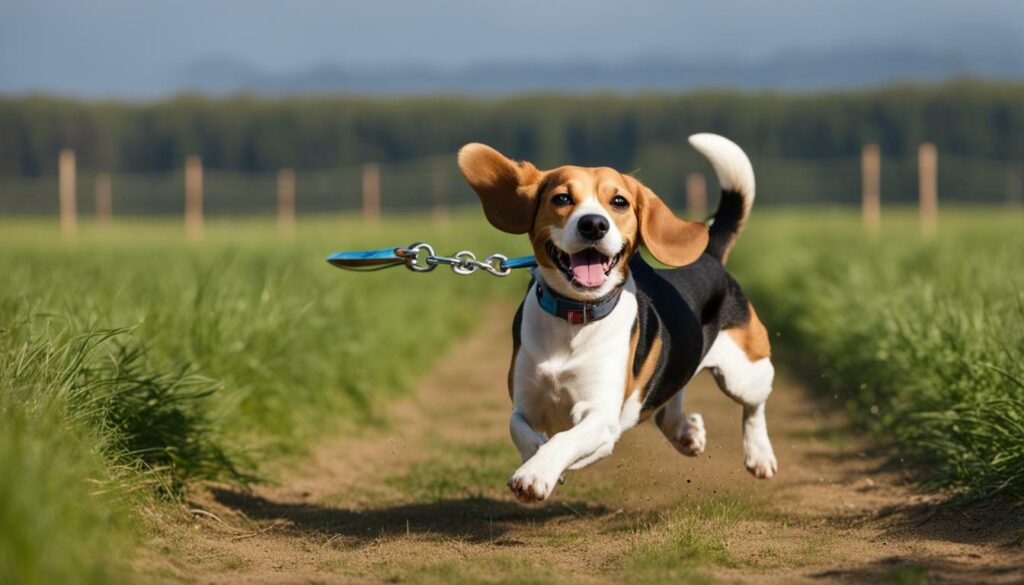
Training beagles to exhibit good behavior, such as not jumping or biting, requires consistent training and positive reinforcement. As energetic and independent dogs, beagles thrive on structure and clear guidance. Establishing yourself as the pack leader is crucial in gaining their respect and cooperation.
One effective technique is to use positive reinforcement, rewarding your beagle with treats, praise, and attention when they exhibit the desired behavior. This creates a positive association and motivates them to repeat the behavior. Consistency is key in training, as beagles respond best to a predictable routine.
To address jumping and biting behaviors, it’s important to redirect their attention to more appropriate activities. For example, when your beagle jumps on you, calmly turn away and ignore them until they have all four paws on the floor. Then reward them with attention and praise. If they resort to biting, provide them with appropriate chew toys and redirect their biting behavior towards those toys.
Training Tips for Good Behavior:
- Consistently enforce rules and boundaries to establish yourself as the pack leader.
- Use positive reinforcement techniques, such as treats and praise, to reward and motivate desired behavior.
- Redirect jumping and biting behaviors to more appropriate activities.
- Provide appropriate chew toys to discourage biting on furniture or personal belongings.
- Be patient and persistent, as training may take time and consistency.

Remember, training beagles to exhibit good behavior is an ongoing process. Stay consistent, patient, and positive in your approach, and you will soon see improvement. With dedication and the right training techniques, you can shape your beagle into a well-behaved and happy companion.
Best Beagle Training Resources
Here are some of the best resources available to assist you in your beagle training journey:
1. Books: There are several informative books on beagle training that can provide you with valuable insights and techniques. Look for titles such as “Beagle Training Made Easy” or “The Complete Guide to Beagle Training.
2. Online courses: Online courses offer convenience and flexibility, allowing you to learn at your own pace. Look for reputable platforms that offer beagle training courses specifically tailored to the needs of this breed.
3. Professional trainers: If you prefer hands-on guidance, hiring a professional trainer can be a great option. They have the experience and knowledge to understand the unique challenges of training a beagle and can provide personalized advice.
4. Beagle training communities: Joining online communities or forums dedicated to beagle training can provide you with a supportive network of fellow beagle owners who share their experiences and insights. You can learn from their successes and challenges.
Remember, each beagle is unique, and what works for one may not work for another. It’s important to find resources that align with your training philosophy and adapt them to suit your individual beagle’s needs. With the right resources, commitment, consistency, and positive reinforcement, you can master the art of beagle training and build a strong bond with your furry friend.
FAQ
Q: What are some tips for successfully training a beagle?
A: To successfully train a beagle, it’s important to establish yourself as the leader, use positive reinforcement methods, and have regular training sessions throughout the day.
Q: How can I deal with a beagle’s barking?
A: Effective techniques for managing beagle barking include redirecting their attention and anticipating triggers to redirect their behavior.
Q: What commands should I teach my beagle?
A: Important commands to teach your beagle include sit, stay, come, and not jumping or biting.
Q: How do I housebreak my beagle?
A: Housebreaking a beagle requires consistency and establishing a routine. Good housetraining practices are key to successfully housebreaking your beagle.
Q: How important is exercise in beagle training?
A: Exercise is crucial for beagle training as it helps burn off their energy and makes them more receptive to training.
Q: Are beagles easy to train?
A: Beagles can be independent and energetic, making training a challenge. However, with commitment, consistency, and positive reinforcement techniques, beagles can be trained successfully.
Q: What resources are available for beagle training?
A: There are many resources available for beagle training, including books, online courses, and professional trainers. Some of the best resources can provide comprehensive guidance and support.
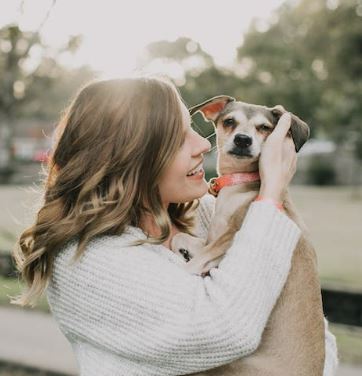
Marissa Delotta, 36, from Dayton, Ohio, is the creative force behind Roverboard.com, a beloved online destination for dog lovers. As a dedicated mom and canine enthusiast, Marissa combines her family experiences with her love for dogs to offer a platform where dog owners can exchange tips, heartwarming stories, and advice. Her website has become a vibrant community for sharing the joys of dog parenting. In her free time, Marissa enjoys exploring dog parks with her family and volunteering at local animal shelters.